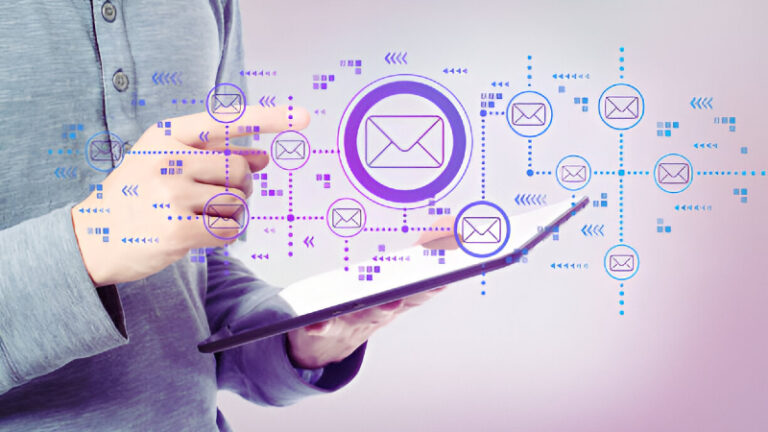For years, digital marketers chased fleeting trends like social media, often overlooking the consistent power of email. As platforms shifted algorithms and privacy concerns grew, a steadfast channel re-emerged email marketing. This isn’t just a resurgence the comeback of email marketing is profoundly rooted in a critical, often underestimated, asset data ownership.
In an era where digital presence feels increasingly rented, directly connecting with your audience on your terms has become invaluable. While debates about email’s death once filled industry forums, recent years, particularly since 2020, have proven these eulogies premature. Marketers, facing budget constraints and an unpredictable digital landscape, have rediscovered email’s inherent power and remarkable return on investment.
The Enduring Power of the Inbox
The notion of email’s decline often overlooked its fundamental utility. Unlike the ephemeral nature of a social media feed, an email lands directly in an individual’s personal inbox a digital front door where permission has been granted. This intimate, direct line of communication fosters a level of trust and engagement that algorithmic platforms simply cannot replicate.
Consider the compelling statistics that underscore email’s unwavering strength:
| Metric | Statistic (Source) | Insight |
| Average ROI | $36-$42 for every $1 invested (Litmus, DMA UK) | Consistently one of the highest ROI channels, proving extreme cost-effectiveness. |
| Global Users (2025 Est.) | 4.6 billion (Statista) | Unparalleled reach across demographics and regions. |
| Automated Email Revenue | 320% more than non-automated (Campaign Monitor) | Highlights the power of intelligent, behavioral-driven campaigns. |
| Consumer Purchase Influence | 60% made purchases due to promotional email (OptinMonster) | Direct impact on sales and conversions. |
| B2B Contact Preference | 77% prefer email (Sopro) | Essential for lead nurturing and professional communication. |
| Emails Opened on Mobile | 55%-58% (HubSpot) | Mobile optimization is non-negotiable for reach and engagement. |
These figures are not just impressive; they tell a story of a channel that consistently delivers tangible results.
Why You Own Your Email List
The fresh perspective on the comeback of email marketing lies in data ownership. On social media, you build an audience on rented land, subject to platform whims and algorithm changes. This forces reliance on paid ads as organic reach declines.
With email, your list is your asset. An email address represents a direct, permission-based connection no third party can mediate. This control is paramount for long-term strategy, especially with increasing data privacy concerns and the removal of third-party cookies. As Ian Truscott, CMO of Spotler Group, states, “You own an email address, whereas you rent an audience on social media.”
This ownership empowers marketers in several critical ways:
- Uninterrupted Access: You dictate when and how you communicate, without fear of algorithmic suppression.
- Enhanced Data Insights: Email campaigns yield rich, first-party data on open rates, click-throughs, and conversions, which can be directly analyzed and acted upon for continuous optimization. Forbes reported that 41% of marketers at successful enterprises use email data for analytics more than any other data source.
- Security and Stability: Your audience data is under your control, offering a more secure and stable foundation for customer engagement.
- Direct Relationships: The ability to foster one-to-one, personalized conversations builds deeper trust and loyalty over time.
The Evolution of Email Marketing
The comeback of email marketing isn’t merely a return to old habits; it’s a sophisticated evolution, driven by technological advancements and refined strategies:
- AI and Automation: AI is transforming email by optimizing send times, automating content creation while maintaining brand voice, predicting unsubscribes, monitoring deliverability, and hyper-personalizing content based on user behavior and buying history. This dramatically increases efficiency and revenue (automated emails generate 320% more revenue).
- Hyper-Personalization and Segmentation: Moving beyond just a name, effective email now customizes content based on deep audience insights, preferences, and behavior. Segmented campaigns lead to significantly higher open and click-through rates (e.g., 14% higher open rates and 100% higher CTR for segmented campaigns according to MailChimp). This focus on relevance is key, with 79% of consumers preferring promotional emails from brands they are interested in.
- Interactive Emails: Elements like quizzes, surveys, embedded videos, and clickable menus directly within the inbox create immersive, engaging experiences, boosting dwell time and engagement.
- Newsletters as Curated Value: In an age of information overload, high-quality, curated newsletters have made a significant return. They provide unique value, keep brands top-of-mind, and foster community, moving away from pure hard-sell tactics. The rise of paid newsletters in niche markets further underscores their perceived value.
- Brand Indicators for Message Identification (BIMI): This emerging standard allows verified brand logos to appear next to emails in the inbox, building instant trust and recognition, and potentially improving deliverability.
How to Navigate This Comeback
To truly capitalize on email’s resurgence, marketers must adopt a strategic, user-first approach:
- Build Your Owned List Strategically: Leverage every touchpoint – accounting software, transaction points, website sign-up forms, lead magnets (like exclusive discounts or guides), and events. Remember, quality triumphs quantity.
- Segment and Personalize Relentlessly: Understand your audience deeply. Divide your list based on interests, purchase history, or engagement levels to deliver highly relevant content. Personalized emails deliver six times higher transaction rates.
- Prioritize Mobile Optimization: With over half of emails opened on mobile devices, responsive design, concise copy, and tap-friendly calls-to-action are non-negotiable.
- Embrace Automation and AI: Use these tools to send welcome emails, re-engagement campaigns, abandoned cart reminders, and to optimize send times and content at scale.
- Focus on Value, Not Just Sales: Provide insightful content, useful information, and exclusive offers that genuinely benefit your subscribers. Newsletters, in particular, should be seen as a source of trusted information.
- Stay Compliant: Adhere to regulations like CAN-SPAM and GDPR. Always obtain explicit consent and make opting out easy to build and maintain trust.
- Choose the Right Martech Stack: Platforms like Mailchimp (for beginners), Constant Contact (for support), ActiveCampaign (for advanced automation/CRM), or integrated CRM solutions offer essential tools for list management, content creation, and analytics.
Conclusion
The journey of email marketing from perceived obsolescence to indispensable asset is a testament to its fundamental value. In a digital world increasingly defined by rented audiences and shifting sands, the direct, owned connection that email provides is more vital than ever. The comeback of email marketing isn’t just a trend; it’s a strategic imperative for businesses seeking sustainable growth and genuine audience connection in 2025 and beyond. It’s time to truly harness the power of your inbox.
Frequently Asked Questions (FAQs)
Why is email marketing considered to have made a comeback?
Email marketing has re-emerged as a vital channel due to its high ROI, direct communication capabilities, and the stability of owning your audience data, especially as social media platforms become less predictable.
What is the average ROI for email marketing?
Email marketing consistently offers one of the highest returns on investment, typically averaging between $36 to $42 for every $1 spent.
How does email marketing compare to social media for businesses?
Unlike social media where algorithms control reach, email offers direct, permission-based access to your audience. Businesses own their email lists, providing more control and stability compared to “renting” an audience on social platforms.
Is email marketing effective for B2B companies?
Yes, absolutely. A significant majority (77%) of B2B buyers prefer to be contacted via email, making it a crucial channel for lead nurturing and professional communication.
How has technology changed email marketing in recent years?
Advances in AI and automation have revolutionized email marketing, allowing for hyper-personalization, optimized send times, interactive elements, and more efficient campaign management.
Why is mobile optimization important for email campaigns?
Over half of all emails are now opened on mobile devices. Optimizing emails for mobile ensures your messages are easily accessible, readable, and engaging for a vast portion of your audience.
What are email newsletters and why are they popular again?
Email newsletters deliver curated, high-quality content directly to subscribers’ inboxes. They’re popular because they provide valuable information, build trust, and cut through the general information overload, offering a consistent connection with your brand.


